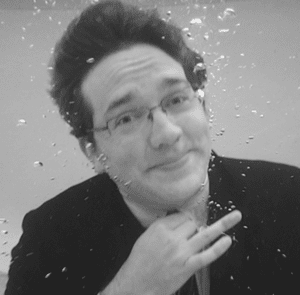Teaching high school art can be difficult, but it can also be incredibly rewarding. Sure, you may get annoyed with a kid skipping class, giving you attitude and talking back, or being so moody they refuse to talk to you. However, for every negative interaction, there are positive interactions with kids who have wonderful personalities, creative ideas, and boatloads of talent.
Watching kids develop—as people and artists—over the course of four years in high school is perhaps the best part of being there. The daily interactions with the kids make the high school art room a great place to be. Whether you’re a new teacher just starting out or an experienced teacher moving up, here are some things you might need to know about teaching high school art.

1. Be Yourself

I really can’t stress this one enough. High school kids want teachers who are real, who are authentic. Let your own personality show through—be who you are! You will be more relaxed and more comfortable, and your students will appreciate your personality.
2. Get Your Classroom Management In Order
There’s not a right or wrong way to run your classroom, but figure out your policies on a few different things: kids talking while they work, listening to music, whether and when they are using their phones, expectations for cleanup, borrowing materials, etc. Know your management strategies, what you will and will not allow, and stick to your guns throughout the year.
3. Make Connections and Build Community
For me, this is probably the most important part of successful classroom management. In fact, I’m talking about this at length during the 2015 AOE Summer Online Conference. It goes back to what I said earlier about letting your personality shine through, and letting your kids get to know you. Once they know you, they can get to know each other. Encourage them to talk, ask for suggestions, collaborate, and critique. The more they talk, the more connections they make, and the more they feel a part of the art room community.
4. Keep Them Busy

A lot of the minor, annoying misbehaviors happen when kids don’t have enough to do. Figure out some ways to keep your kids working. I personally have my kids working on two or three different projects at all times, so there is always something to do. You can also utilize Genius Hour, Sketchbook Assignments, a Journal Challenge or Drawing Challenge, or anything else. Give kids engaging, creative work, and they will respond well.
5. Be Happy to See Your Kids
Okay, I’ll say it–not all of the kids are my favorite. But the important thing, for me as a teacher, is that they don’t know that. No matter the kid, no matter their behavior, no matter their grade, I am excited to see them. They receive a smile, an acknowledgment, and often a conversation, every time they come into my classroom. It makes the classroom environment more relaxed and life better for all involved.
6. Be Present
It’s tempting to do your grading, fill out your paperwork, answer e-mails, or check your phone. Don’t do it. Spend time talking to your kids. Pull up a chair and work next to them. Walk around the room and do mini-critiques. Give your attention to your class, and they will give their attention to you and to their artwork.
7. Know Your Budget and Supplies
One of the biggest challenges for new high school teachers is dealing with the budget. Figure out how much you have to spend, because you may need to find some ways to stretch your budget or look for some alternative sources of funding. Then, ask yourself a few questions: What are my essential supplies? What can I do without? What supplies are worth the extra money? For me, it’s paint brushes and colored pencils, but that’s a decision that’s different for everyone.
Teaching high school art comes with a lot of unique challenges, but it comes with a lot of wonderful benefits as well. If you can take on those challenges by being yourself, keeping your management on track, and building a classroom community, the rewards and benefits will come.
What are your most important tips for teaching high school art?
What is the best part of being a high school art teacher?
Magazine articles and podcasts are opinions of professional education contributors and do not necessarily represent the position of the Art of Education University (AOEU) or its academic offerings. Contributors use terms in the way they are most often talked about in the scope of their educational experiences.




